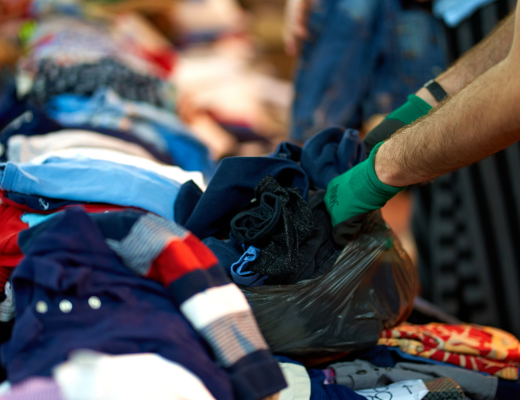Clothes donation and its impact on communities
Clothes donation isn’t just a way of decluttering your wardrobe, it’s also a great way to support your community and drive sustainability.
The average Australian disposes of 23 kg of clothes that end up in landfills every year according to findings revealed by Clean Up Australia. Even though these figures are alarming, there still hasn’t been a sustainable and systematic solution that has emerged to counter its adverse impact.
Clothes donation collectively, has by far become the most feasible solution where everyone—young and old—can make sure that clothes don’t end up in landfills and instead help communities who don’t have the means to purchase brand-new clothes.
For many community organisations, this problem is addressed with clothes donation bins that are spread across Australia where they invite clean and usable clothes to be donated so that they can be distributed via resale to communities that are in need. Not only does this ensure that communities are taken care of, but it’s also becoming a sustainable way of reducing the ecological footprint left behind by the fashion industry.
The impact of donating clothes to deserving communities
Youth organisations are open to young people from any background, lifestyle, ethnicity, and more. This means that they provide a safe and inclusive environment where positive youth development is promoted.

Provide warmth and comfort
Donating clothes is a direct way of helping individuals and families who are facing hardships. Many community organisations depend on clothing bins and clothing drives to provide protection, warmth and dignity to those who are going through difficult times and experiencing homelessness.

Strengthen communities
Donations are a way of strengthening the fabric of local communities by creating a resilient and compassionate community. It promotes a sense of unity and empathy where even small acts of kindness like donating clothes have the power to make positive changes in the lives of many people.

Promote sustainable consumption
The fashion industry has always been notorious for its environmental footprint, whether it’s production processes or the disposal of unsold or unwanted materials. Donating clothes can help reduce the environmental impact of textile production and waste by extending the life of clothing.

Empower charitable organisations
When it comes to supporting communities and carrying out outreach efforts, many charitable organisations depend on donations like clothing. From providing clothing to those in need to reselling pre-loved clothing, donating clothes can help these organisations serve communities better.
What Our Community Says About Us
Our Partners





Strengthen your community by fostering generosity
Neglected or unused clothing that is in wearable condition has the potential to offer comfort, confidence, and warmth to countless people. In Australia, clothing bins have become a reliable and sustainable way to make sure that communities are taken care of and, in some cases, can even be life-changing.
At Youthsafe, we want to make sure that donating clothes is a quick and easy process. This is why we have made clothing bins available throughout Sydney for pre-loved clothing to be dropped off so that they can make it to those who need it the most.
FAQs
Yes. At Youthsafe the clothes we collect are redistributed to communities that can greatly benefit from it. We have also partnered with King Cotton to gain support for our clothing bins and make sure that it’s a sustainable alternative to waste and improper textile disposal.
There are a lot of experts and research that support the idea of clothing donations for a more sustainable environment. According to the Australian Fashion Council (AFC), 200,000 tonnes of clothing end up in landfills across Australia with just 2% getting recycled.
In a 2021 Impact Report, it was revealed that 86% of clothing donations are used by charities, with just 14% going to landfills. While there is still work to be done to further reduce the amount of clothing that is disposed of in improper ways, clothing donations continue to be a leading way of addressing this growing problem in Australia.


